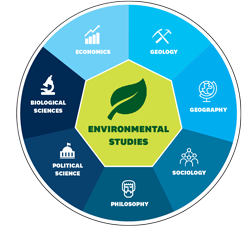Note: The content of this post is from answers to questions posed on Quora, written by Dylan Duverge. For the originally published content, Click Here.
Environmental science really boils down to the study of the interactions, for better or worse (mostly worse), between earth systems and human systems. It differs from other fields of study in that the focus is less about one discipline in particular, and more about the connections between disciplines (i.e., interdisciplinary), and how we can use this understanding to solve environmental problems. Environmental scientists tend to have sufficient literacy in the various hard sciences (physical and biological) and social sciences to understand the connections between them, but not enough to really call themselves an expert in a single discipline (e.g., physicist, geologist, biologist, and all those other “ists”). That being said, and because there are so many disciplines within the field, you tend to get various “flavors” of environmental science programs, some focused more on sustainability and agriculture, others more focused on geosciences and pollutant cleanups, for example. This great 10 minute YouTube video (Bozeman Science) offers one of the clearest and illustrative overviews I have run across.

